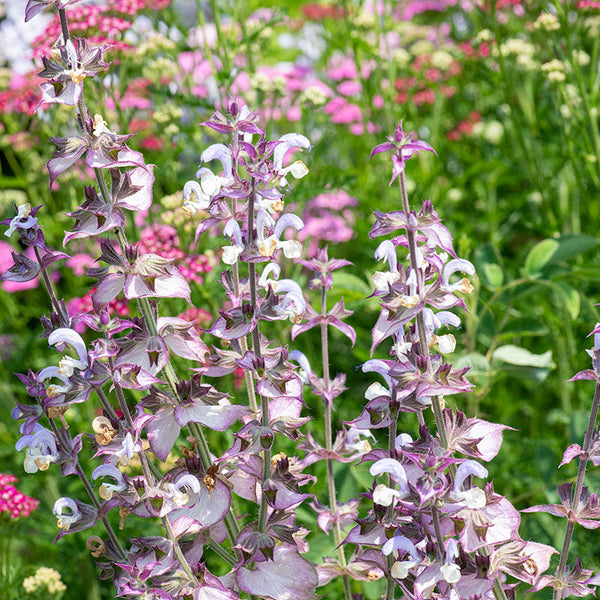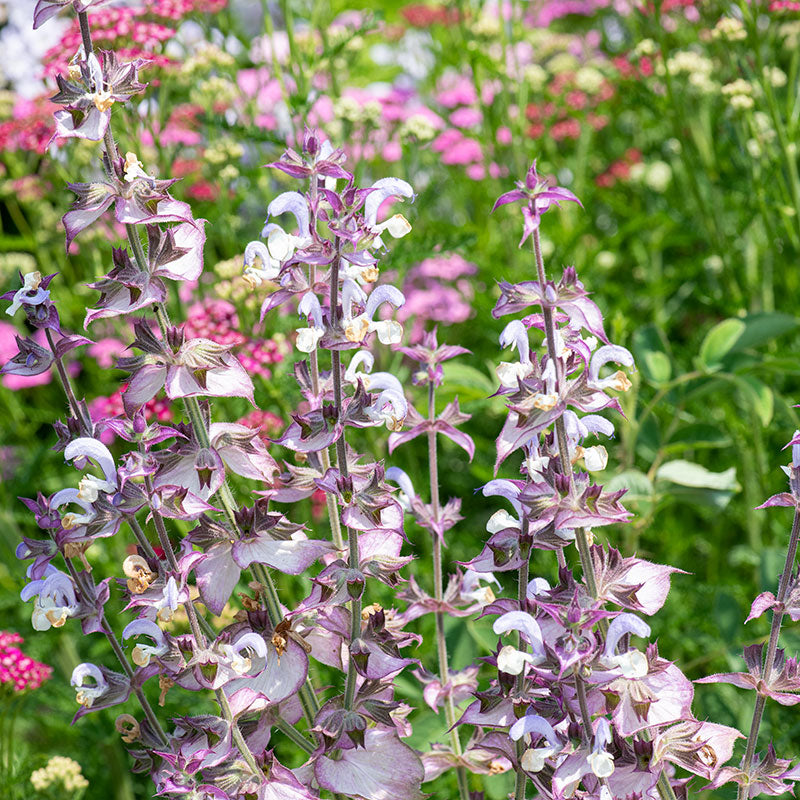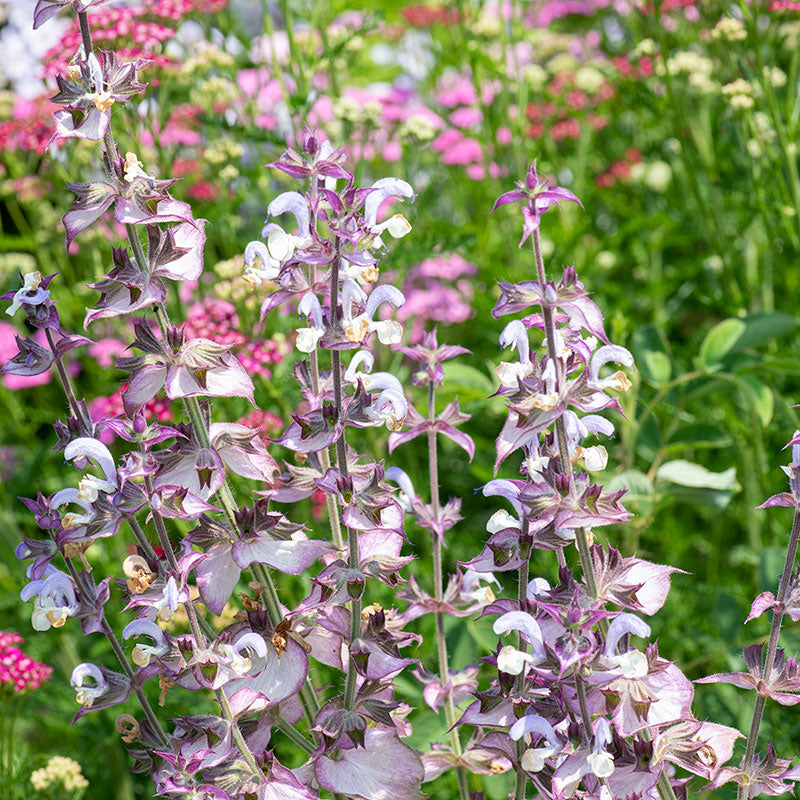Seed Packet
Salvia - Clary Sage
Salvia sclarea v. turkestanica
A dramatic focal point of early summer gardens, biennial clary sage has large quilted leaves, and tall, multi-branched spikes of pink flowers encased in showy, long-lasting violet bracts. A sinus-clearing scent of grapefruit and pine rises from the bruised leaves and flowers. Herbal apothecaries supplied clary as an eyewash, or "clear eye," and amazingly, both cosmetic formulations and muscatel wines found it an essential ingredient. Beautiful in combination with oriental poppies in the early summer garden. Listed in an 1827 catalog. Self-sows. Sorry, cannot ship to WA.
SKU #S091
































